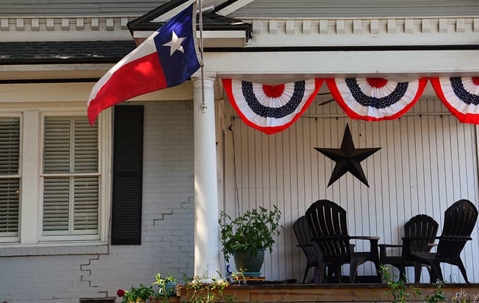Structural Protection of Water-Damaged/Flooded Homes
A Guide for Pest Control Professionals and State Pesticide Regulators
- See the following Government Guidelines and Recommendations: FEMA ‘What Should I do After a Flood’. CDC ‘Flood Safety Fact Sheet’. EPA Fact Sheet ‘Flood Clean Up’. American Red Cross and FEMA ‘Repairing Your Flooded Home’. Check your specific state mold work and remediation requirements.
- If home has not been flooded: check moisture content of structural wood in all walls behind sheetrock and in sub floors and roofs. If above 25% moisture content, go to #3 and follow for flood recommendations for affected areas. If between 20% and 25% moisture content, remove/clean and repair all visibly damaged or molded materials. Immediately dry home to structural wood moisture content of less than 20% using dehumidification or dry heat and ventilation. Consider the installation of an appropriate wood preservative (to prevent wood rot, termites, wood destroying beetles and carpenter ants) for the long-term structural integrity of the home.
- If home has been flooded: Remove all waters and non-structural debris from all flooded areas to a height of three feet above flood zone to include carpet, furniture, curtains, garbage, mud, silt and sewage. Pressure wash and pump out if necessary. Removal of materials can disrupt potentially harmful materials and make them airborne. Proper protective equipment may be necessary.
- Remove all sheet rock and insulation to a height of three feet above the flooded area or to a height of three feet above a 25% moisture content reading, whichever is highest. Removal of materials can disrupt potentially harmful materials and make them airborne. Proper protective equipment may be necessary.
- Clean and/or remove all visible debris and mold on all structural wood.
- If there is evidence of visible sewage contamination or if contamination is shown by laboratory pathogen testing (e.g., E. coli, S. faecalis, or C. welchi testing), thoroughly clean and disinfect with an appropriate EPA registered disinfectant, sanitizer and virucide.
- Obvious signs of fungal decay or termite damage and other structural defects that impact the structural integrity of the building must be repaired.
- Treat all structural components with an appropriate EPA registered and labeled wood preservative (decay fungicide and structural wood insecticide that will prevent wood rot, termites, wood destroying beetles and carpenter ants) and then immediately dry to less than 20% wood moisture content within 48 hours using dehumidification or dry heat and ventilation. If immediate drying is not physically possible or if future high humidity or wetting is expected, the addition of an appropriate EPA registered and labeled moldicide/mildewcide should be added to the wood preservative application.
- When the home is structurally repaired and in a dried in state (sound weatherproof roof and exterior walls) and the wood moisture content remains below 20%, replacement of the insulation and sheetrock may be carried out, and the homeowners may return, provided no other health risk remains.
- Consideration to a professional annual or biannual inspection should be given to maintain the structural integrity of the building.
Note: Only properly EPA registered pesticides (disinfectants, wood preservatives and moldicides/mildewcides) can be used, and only properly licensed, trained and insured pest control professionals can be used for any such pesticide application in homes.

